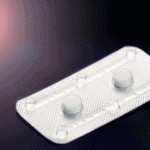
Dr. Ope OshodiTelehealth, healthcareJune 25, 2020
Early detection of tuberculosis is very important. Tuberculosis, popularly known as TB remains one of the most challenging infectious bacterial diseases affecting human health. It is caused by a tuberculosis germ called Mycobacterium Tuberculosis. Because it is highly communicable, this disease is easily spread via the coughs and sneezes of the infected person.
Tuberculosis may sound like a disease of the past, but it is still a real concern today. Matter of fact, in 2018 alone, more than 10miliion people were sick with TB and 1.5million people died of the disease with Nigeria as one of the 8 countries in the world that account for most cases of the total global burden of tuberculosis.
Note that early detection of tuberculosis is not a death sentence. In fact, the disease is almost always curable if the sick person seeks medical help and adheres to using his/her medications for the stipulated period. Thus, it is always better to detect it early than to wait till it has caused a lot of damage.
Having active tuberculosis should not prevent someone from living a normal life, but more importantly, it helps if it is discovered at its infant stage as early detection of tuberculosis has proven to:
• Prevent prolonged illness, disability or possible death
• Improve the chances of cure and prevent complications
• Prevent transmission of the tuberculosis bacteria to friends and family
It develops through a latent stage then metamorphose to the active stage. The infected person’s immunity first builds a wall around the germ to prevent it from growing and multiplying (Latent Tuberculosis). But before long, and especially if not detected early, the body’s immunity becomes weak, thereby making the disease to grow and start to cause symptoms (Active Tuberculosis).
| Latent TUBERCULOSIS | Active TUBERCULOSIS |
|---|---|
| No symptoms and the person will feel fine | Has symptoms and the person feels sick |
| Chest x-ray is usually normal | Chest x-ray is usually abnormal |
| Cannot transmit the germ to others | Can transmit the germ to others |
Tuberculosis has been known to affect the following areas of the body:
• The Lungs: The commonest site. (pulmonary tuberculosis)
• Other parts of the body: kidneys, spine, brain. (Extrapulmonary tuberculosis)
• Multiple sites of the body (Miliary or Disseminated tuberculosis).
Without early detection of tuberculosis, anyone can get the disease but the people at increased risk include,
• Friends, family or co-workers of people who have active tuberculosis
• People who had tuberculosis in the past but did not take or complete their medications
• Babies who did not receive their tuberculosis vaccines
• Elderly people
• People with weak immune system (HIV and cancer patients)
• Working or living in a hospital or nursing home
• Being part of a group where tuberculosis is more likely to spread (homeless people, IV drug users, prisoners)
• Smokers


The early signs develop slowly and may go unnoticed. They include:
• Cough
• Chest pain
• Loss of appetite
• Weight loss
• Tiredness
• Fever
• Night sweats
• Chills
Tuberculosis disease in the lungs can be infectious.
• It can be spread when someone sick with TB coughs, talks, sneezes or sings and sprays the disease germ into the air
• A person can get tuberculosis when he/she breathes in the disease germ after spending prolonged periods with a sick patient.
• Shaking someone’s hand
• Sharing food or drink
• Touching bed linens
• Touching toilet seats
• Sharing personal belongings.
The infectious period is the time when a sick patient with active tuberculosis can pass the germ to other people. It usually begins several months before any obvious signs of tuberculosis are noticed.
The infectious period continues until:
• The patient is on appropriate treatment
• The patient is getting better
• The patient has 3 consecutive smear negative specimen.
Early detection of tuberculosis will initiate administering treatment that will cure the illness.

Early detection of tuberculosis is crucial and it may be important to get screened for tuberculosis if you have any of the following:
• Cough especially if it is more than 3 weeks
• Bloody sputum
• Losing weight (without going on a weight loss diet)
• Sweating a lot at night
• You live with someone who has the disease or chronic cough
• You are immunosuppressed
A person with signs and symptoms suggestive of tuberculosis can then be asked to do one or more of the following tests:
•Sputum to test for the tuberculosis germ
• Chest x-ray to check for changes in the lungs
• Blood tests to check for signs of tuberculosis infections or reduced immunity
• Skin test (Mantoux test) which is also positive in latent tuberculosis
Early detection of tuberculosis is important and the treatment depends on whether a person has active or latent tuberculosis. With latent tuberculosis, your doctor may decide to give you medications to kill the bacteria if you are at risk of getting active tuberculosis. But If you already started to see any symptom of active tuberculosis, please see your doctor as soon as you can for further testing.
When it has gotten to full blown active tuberculosis, the sick person is given several tuberculosis medications to kill the bacteria. Taking these drugs as prescribed is important to prevent the tuberculosis germs from becoming resistant.
The drugs do not affect strength, sexual function or ability to work. They are taken for prolonged periods (usually 6 months or more) because the disease bacteria grow slowly and are slow to die. It is not uncommon for most TB patients to start feeling well after only a few weeks of treatment, but the tuberculosis germs are still alive in the body.
Therefore, the medications must be taken religiously and without interruptions for the entire duration of the treatment. It is imperative to know how dangerous quitting tuberculosis medicines early or taking them irregularly can be because of the tendency of the disease bacteria to start to grow again, making the patient sicker and infectious again. In worse case scenarios, the bacteria become resistant to the medications.
Furthermore, new and different medicines will be needed to kill the bacteria and these new drugs will have to be taken for longer periods, they usually include daily injectable and may have more side effects.
If you have active tuberculosis, follow these tips until your doctor says you are no longer infectious:
• Take all your medicines as prescribed until your doctor takes you off them
• Keep all your doctor’s appointments
• Cover your mouth with a tissue when you cough or sneeze and seal the tissue in a plastic bag before you throw it away
• Wash your hands after coughing or sneezing
• Stay home from public places.
• Don’t visit other people and don’t invite them to visit you
• Don’t use public transportation
• Open your windows to allow fresh air to move around.
Telemedicine is the digital delivery of healthcare services. Telemedicine works perfectly for early detection of tuberculosis; just from your mobile and internet technology, you can speak with a doctor about the symptoms of your illness.
Telemedicine offers high-tech medical care on a nationwide scale, just a click away from the comfort of your home. Tuberculosis is a highly contagious disease, and it requires isolation from public space; however, telemedicine brings healthcare professionals closer through technology.
The early detection of tuberculosis can be made through your technological consultation with a doctor; even your tests can be prescribed through a video call and email to you. You do not need to miss anything, even the results from the laboratory tests can be interpreted, and medication can be prescribed if need be.
Early detection of tuberculosis is the best and the best time to detect TUBERCULOSIS is now!
Consult a doctor at kompleteCare to know your TUBERCULOSIS status today!
1.What is early detection of tuberculosis?
Early detection of tuberculosis can be achieved when presumptive tuberculosis cases are suspected, particularly before symptoms appear. The chest X-ray examination may be conducted to be able to identify any anomalies in the lung parenchymal that are suggestive of tuberculosis.
2. What is the most common method for early detection of tuberculosis?
Early detection of TB is important, and sputum is the most important sample for laboratory testing in cases of pulmonary tuberculosis. The most common technique for detecting pulmonary tuberculosis (TB) is direct sputum smear microscopy, which may be found in the majority of primary care laboratories at health centers.
3. Why is early detection of tuberculosis important?
It is crucial to take your health seriously and also keep your doctor’s appointments. However, early detection of tuberculosis is very important because nearly all cases of tuberculosis that are advanced or somewhat advanced have progressed past a stage that can be treated. If early detection of tuberculosis is achieved, there are about seventy to eighty percent chances of initiating appropriate therapy to cure it or, at the very least, suspending further advancement of the disease.
4. Can TB be cured if detected early?
The technological advancement has given an edge to some possibilities for achieving outcomes that were rather difficult to achieve. Early detection of tuberculosis increases the possibility of it being cured. When beginning therapy for tuberculosis, you are meant to take multiple medications.
A doctor will be able to determine when TB patients are no longer able to spread the disease to others after they have been taking TB medication for a few weeks. To be cured, the majority of TB patients must take TB medication for at least six months.
5. When should you suspect tuberculosis?
The following are signs of active tuberculosis:
If you have the symptoms listed above, endeavour to contact a healthcare professional, for the early detection of tuberculosis helps prevent advance stages.
6. Why is TB so hard to detect?
Hard detection of TB can be attributed to two factors: firstly, the challenge of acquiring suitable clinical samples, particularly from inaccessible locations; and secondly, the inadequate sensitivity of diagnostic examinations.
7. What are the 3 stages of TB?
The TB disease is known to have three stages:
The illness can be identified by a TB blood test or a TB skin test. To treat TB and stop it from spreading to other people, treatment must be administered precisely as prescribed by the doctor.
Early detection of tuberculosis can be done through skin test. The skin test requires an injection on the inside of your forearm, a little amount of a drug known as tuberculin just beneath the skin. A medical professional will examine your arm at the injection site for swelling within 48 to 72 hours. A positive or negative test result for tuberculosis is determined by the size of the raised skin.
8. Can tuberculosis go away on its own?
Even though tuberculosis symptoms may appear to disappear, the disease frequently resurfaces. In the absence of treatment, TB may recur. Treatment regimens for tuberculosis are months-long. The causative agent of tuberculosis (TB) is mycobacterium tuberculosis, an infectious disease that primarily affects the lungs.
9. How do I avoid tuberculosis?
A few easy safety measures can lower the risk of infection with tuberculosis:
Basic TUBERCULOSIS facts. Centre for Disease control and Prevention. December 2018. Available from https://www.cdc.gov/Tuberculosis/about/default.htm
Global Tuberculosis report 2019. World health Organization. October 2019. Available at https://www.who.int/Tuberculosis/publications/global_report/en/
Mayo Clinic. (2023). Tuberculosis.
Putra et al. (2019). The implementation of early detection in tuberculosis contact investigation to improve case finding.
Tuberculosis. Lung Disease and Respiratory health. WebMD. Available at https://www.webmd.com/lung/understanding -tuberculosis-basics
TB Alert. (2023). TB prevention.
Singh, S., Dey, B., Sachdeva, K. S., Kabra, S. K., Chopra, K. K., Chaudhary, V. K., Sharma, P., & Katoch, V. M. (2015). Challenges in tuberculosis diagnosis and management: Recommendations of the expert panel.
Spencer, F. R. (1926). Importance of early diagnosis and treatment of laryngeal tuberculosis.
12 points of Tuberculosis. Patient Education. Georgia Public Health TUBERCULOSIS Unit. April 2012. Available at https://dph.georgia.gov
MotivationJune 24, 2020
healthcareJune 25, 2020
NutritionFebruary 5, 2025
MedicationFebruary 5, 2025








